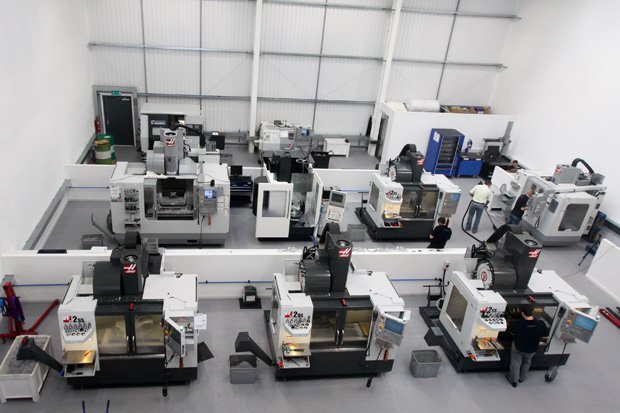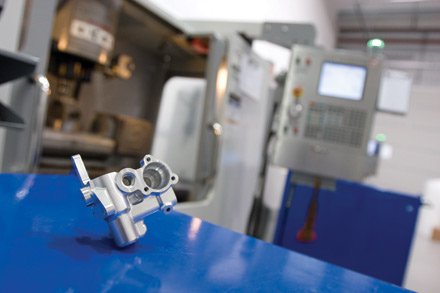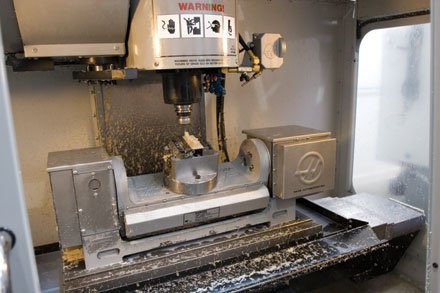BH Blackmore
Precision engineering in the motorsport industry is demanding and competitive, especially when supplying Formula One teams. That’s why BH Blackmore strives to deliver an overall level of service, to surpass expectation, and to ensure that the supply of machined components is always within tolerance and time frame.
Formed in 2002 the company specialise in 5-axis complex-surface machining, and supply many of the teams in Oxfordshire’s “Formula One Valley”, although they also produce components and sub-assemblies for the medical, marine and electronics industries. The company is fully conversant with all types of materials, including Aluminium, Titanium, Plastics, Brass, Copper & Stainless Steel. The company can proudly boast they achieved accreditation to ISO9001 for quality control.

The company’s family of Haas machines includes two Super Mini Mills, a VF-2 Super Speed VMC with 5th-axis trunnion and an SL-10 lathe. Replacing the CNC machines bought when the company was founded is a Haas VM-3 vertical machining centre, fitted with a TR-160 trunnion table to give full 5-axis. This was a decision that Brendan Blackmore wishes he’d made a lot sooner. “I regret not buying into Haas there and then, saving ourselves a lot of bother. The non-Haas machines are fine for drilling and simple stuff, but really aren’t up to the 3D work we’re doing these days. The VM-3 produces superb surface finishes so there’s no need to bead blast or polish.”
Mr Blackmore continues, “We’re impressed with the Haas bolt-on trunnions. They give us true 5-axis machines that are perfect for producing small complex parts. The trunnion on our VF-2 hasn’t been off the machine since we bought it and has given us trouble free service. When we were making the decision to buy, we liked the fact that Haas have been making 5-axis machines for donkeys’ years and are a genuine ‘one stop service’ – they make everything: the machine itself, the rotary table and even the control. We also really liked the price – half that of anything else out there!

“Our Haas machines are programmed offline using Unigraphics NX, this is the CAD/CAM system used by most of the F1 teams. Input from our customers can be given to us as CAD files, drawings, sketches or sample parts requiring reverse engineering. The Haas machines handle the offline files very well and the one-touch set-up is great.”
The Haas VM-3 features a generous 1016 x 660 x 635 mm work cube, a 1372 x 635 mm table, a 12,000-rpm spindle powered by a 30-hp vector dual drive system, and a high-speed control with full look-ahead.

The VM-3 comes standard with a 24+1 side-mount tool changer that swaps tools in 2.8 seconds. Also standard are an automatic chip auger system, programmable coolant nozzle, remote jog handle, automatic air gun, high-speed machining software with look-ahead, hard drive with Ethernet interface, USB drive, Visual Quick Code programming, user-definable macros, coordinate rotation & scaling, spindle orientation and a 4-th axis drive.




